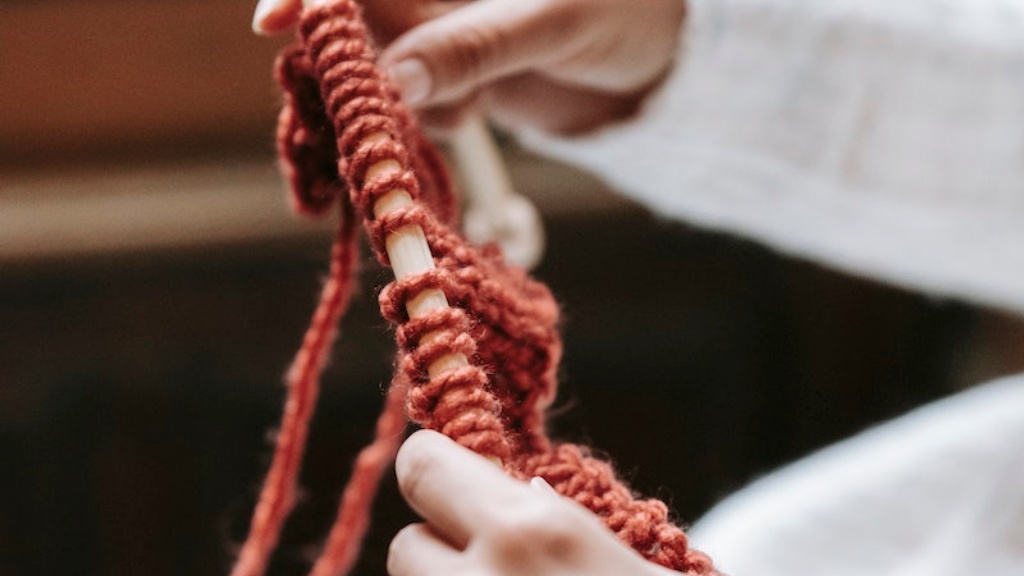Identifying Tension Issues in Your Sewing Machine
In order for your sewing machine to provide optimal performance, you must ensure proper tension. Without the correct tension, your project won’t sew together properly, resulting in uneven stitches and runs. Thankfully, adjusting the tension of your sewing machine is a relatively simple task.
Check Thread Tension
Before attempting any adjustments, you’ll want to inspect the tension of your thread. If the spool is wound too tightly or too loosely, it could lead to certain tension issues. To test the tension, remove the spool cap and pull the tail of the thread quickly. If the thread peels off easily, the tension is too low; if it feels like something is “pulling back”, too much tension is applied.
Adjust Bobbin Thread Tension
If you’ve determined that the thread tension is ideal, the next step is to set the bobbin tension. You’ll find the bobbin tension screw near the bobbin case. As you twist the screw, you’ll feel a slight resistance which indicates it has been tight enough. If it turns too easily, tight it further. As a general rule, you should be able to hold the thread between two fingertips and still feel a slight tug.
Optimise Upper Thread Tension
Once the bobbin tension is adjusted, you must set the upper thread tension. To do so, turn the tension knob. As you do, the tension of the thread should follow suit. Again, you’ll want to use “two fingertip” method to establish the correct tension. Finally, if your machine has a tension release lever, use it to make sure the thread is in a relaxed position.
Testing the Adjustments
After the tension has been adjusted, it’s important to perform a quick test. To do so, choose fabric with a distinctive pattern – quilting cotton works well. Begin sewing a line and observe the stitches. If the stitch is loopy, uneven or out of balance, you’ll need to adjust the tension further.
Cleaning the Sewing Machine
The hook and bobbin area can quickly become covered with lint and gunk, which can hinder the tension of the machine. To prevent this from happening, it’s important to clean the hook and bobbin area regularly. Doing so should ensure the tension remains consistent.
Thread-Specific Tension Knowledge
Each thread you use will have its own unique tension requirements. As such, it’s important to conduct a bit of research so you have a better understanding of the proper tension to use. Additionally, you should take note of the tension as you sews each line, in case you need to adjust it ever.
Different Thread Weights and Materials
Thread weight and material play an important role in tension, too. A lightweight thread such as polyester or polyester-cotton will require a much different tension than a heavier thread, such as quilting cotton. To ensure you’re using the correct tension for each thread, you’ll want to refer to your machine’s manual.
Common Thread Tension Problems
If you’re having tension issues, it’s usually due to one of two factors – either the tension needs to be adjusted or the bobbin needs to be cleaned. In terms of the tension, both the upper and the lower thread tensions must be set securely; otherwise, it can result in “birds nests”, loopy stitches and squashed corners.
Lost Time and Frustration
Without proper tension, it will not only be difficult to sew, but it can also lead to a lot of lost time and frustration along the way. That being said, it’s always a good idea to take a few minutes to ensure the tension is properly set before starting your project. It could save you a lot of time and headache in the future.
Tension & Troubleshooting Tips
When it comes to tension problems, there are a few tips that can help. First, double-check that the spool is properly wound and the tension release lever is engaged. Additionally, you’ll want to adjust the tension regularly – even if you seem to have the perfect stitches, it’s a good idea to check it from time to time.
Thread-Specific Settings
Finally, certain fabrics, threads and coatings can affect the way the tension needs to be set. With that in mind, it’s important to have an understanding of the type of thread you’re using and its unique tension requirements. Additionally, you may need to check the machine’s settings against what the thread manufacturer suggests.
Stitch Quality
The quality of the stitches is a primary indicator of the tension balance while sewing. If the stitches appear loopy or do not lay flat, the tension needs to be adjusted. Additionally, if the needle thread becomes too tight, it could lead to skipping or breaking needles. On the other hand, if the bobbin thread is too tight, it can lead to “birds nests” underneath the fabric.
Timing and Frequency of Adjustment
When it comes to adjusting the tension, it’s important to do so at least once every few days. For example, you should check the tension every time you switch to a new kind of thread or batch – even if it’s from the same thread manufacturer. Additionally, it’s also a good idea to adjust the tension every other month to ensure the highest quality results.
Specialty Threads
When it comes to specialty threads, they often require a different tension than the regular sewing thread. As a general rule, the tension of these threads should be set between 4 and 5. Of course, it’s always a good idea to refer to your machine’s manual to ensure you’re using the right settings.
Safety First
Finally, it’s important to note that adjusting the tension can be dangerous – especially if you’re not familiar with the parts of the machine. Furthermore, some threads can be quite thick, so there’s always a risk of it snapping and hitting your eyes. Therefore, it’s always a good idea to wear protective glasses if you’re ever adjusting the tension of your machine.




